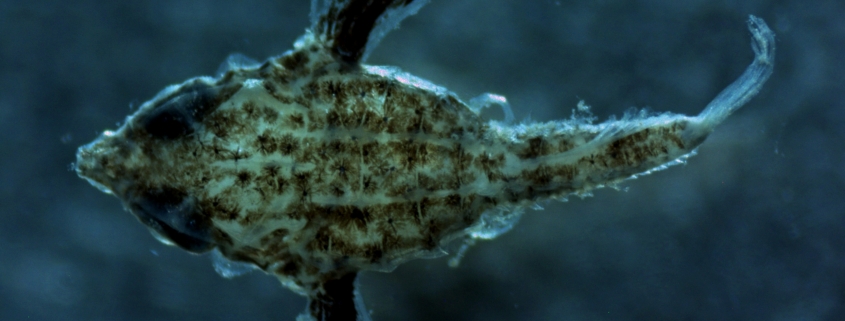First major study of fish larvae in Cockburn Sound
While fishers head out into Cockburn Sound in search of prized catches such as pink snapper, a team of scientists has been targeting fish larvae to better understand which species are in the area during their earliest life stage and where they are most abundant.
Since late 2021, they have recorded more than 12,000 larvae during monthly sampling.
The researchers say while Cockburn Sound is known to be an important spawning ground for key fishes such as pink snapper, local studies on the larval stage of their development have been limited until now.
Jake Nilsen, a Research Assistant at Curtin University, is part of the team working on the WAMSI Westport Marine Science Program project which also involves scientists from WA Museum Boola Bardip, CSIRO and the Department of Primary Industries and Regional Development.
“We haven’t known a lot about the larval fish in this system,” Mr Nilsen said. “There have only been a few studies and nothing as comprehensive or long-term as the current project. This is the first of its kind to be looking at Cockburn Sound in such detail.”
He said of the thousands of larvae recorded by the team, the most abundant were baitfish, dragonets and filefish, which have to be individually identified to species (if possible) using a microscope.
This was a difficult and time-consuming task given there are so few larval fish taxonomists in WA.
“Important fishery species have also been common, including whiting, trevallies and flatheads which is exciting as it gives new information about their early life stages we didn’t previously understand,” Mr Nilsen said.
“Pink snapper larvae abundance has been relatively low compared to previous studies but observations indicate their abundance is likely to increase following the spawning in October of this year.”
“We are seeing spikes in the number of pink snapper larvae in the most recent samples over the summer period.”
“We know pink snapper use these areas for nurseries and that’s been backed up by the data we’re collecting for the fish larvae.”
“Cockburn Sound is proving to be really important for fish larvae and they are quite vulnerable to environmental stressors.”
Mr Nilsen said two methods were being used to sample larvae.
“The main one is bongo tows which is a net with a small mesh size towed behind a small boat. It basically goes from the surface almost to the seabed and comes back up.”
“In collaboration with DPIRD, we are also using light traps over the summer period to capture larvae that are attracted to light, and just after the snapper spawning period.”
“A promising finding from the light trapping method is the exceptionally high number of invertebrate larvae captured including the larvae of the blue swimmer crab.”
“Work is underway to determine the abundance of the early stages of this species, which remains largely unstudied.”
“Findings from this work may prove useful in restoring that fishery, which remains closed in Cockburn Sound because of concerns about declining numbers.”
He said there was a lot happening in the Sound that couldn’t be seen without a microscope.
“There is a lot going on in the water column.”

